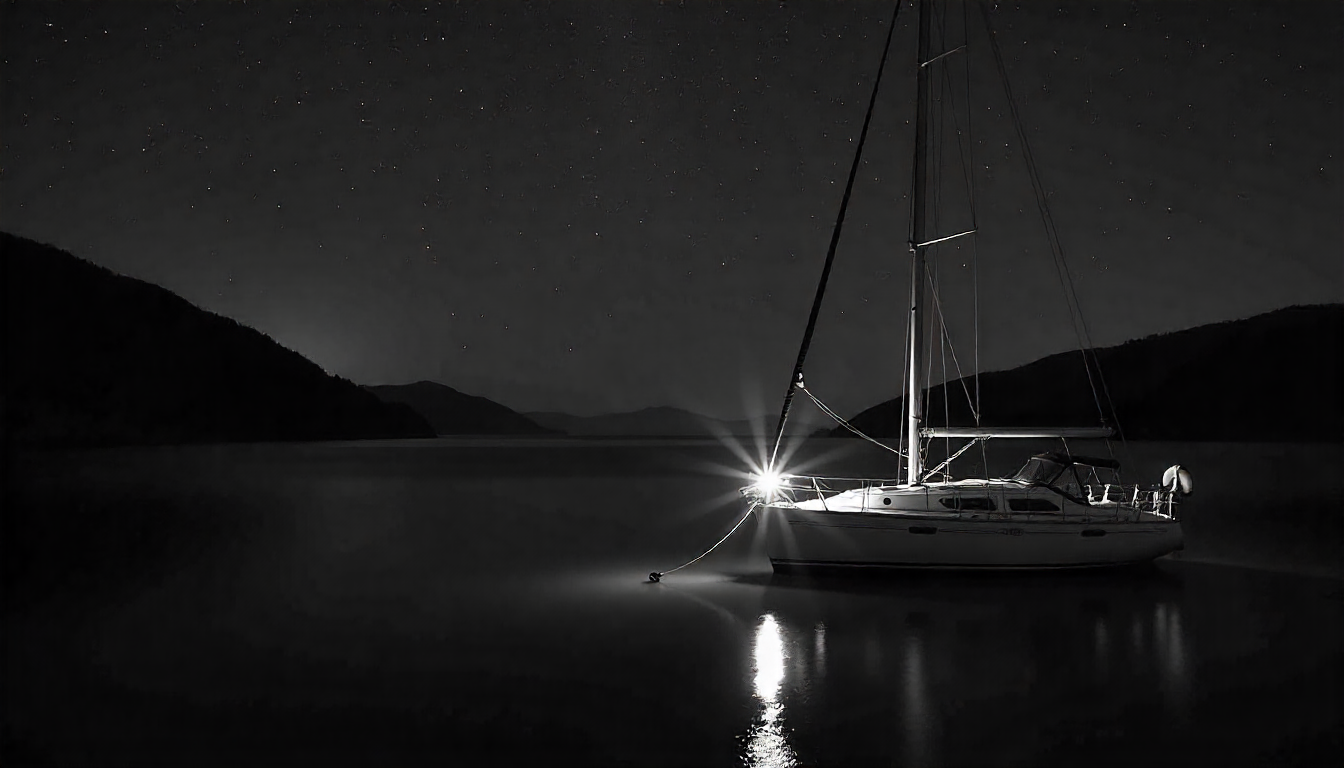Boaters often find themselves needing rest after a long day on the water, and anchoring a boat at night is one of the most crucial skills to master. Without the right knowledge, even a calm evening can turn risky. From understanding your anchor and rode to preparing your ground tackle, knowing how to properly secure your boat after sunset makes all the difference.
Why Anchoring a Boat at Night Matters
The risks of boating after dark are higher than during the day. Reduced visibility, unpredictable weather conditions, and shifting currents increase the chances of drifting or dragging anchor. When you anchor a small boat or a larger vessel, it’s not just about dropping metal overboard—it’s about ensuring the holding power of your gear and checking that your anchor line is properly set.
Many accidents occur because boaters underestimate the importance of anchoring. Without careful preparation, your boat may drift into shallow water, other boats, or even the shore. That’s why experts emphasize taking time to set the anchor correctly and double-checking the scope, line, and rode.
Choosing the Right Anchor and Line
Selecting the correct anchor depends on bottom type, water depth, and weather conditions. For soft mud, mushroom anchors may also be used, while plow anchors with curved flukes work best in sand or mixed bottoms. Each anchor has unique holding power, and understanding which type works best for your boat is essential.
The anchor and line combination should be strong enough to resist wind or current. Many boaters underestimate how much line they need. The general rule is to let out an amount of rode at least five to seven times the water depth. For example, if you are in 10 feet of water, you may want to put out 50 to 70 feet of anchor rode to ensure stability.
An anchor and rode system typically includes the anchor, chain, and rope. The chain adds weight, helping the anchor dig in properly. The anchor line should be secured firmly to a bow cleat, never to the stern, as improper attachment can destabilize the boat.
Preparing to Anchor Safely
Before lowering the anchor, make sure the area is safe. Look around for other boats, mooring balls, or shallow areas. Position the boat into the wind or current, whichever is stronger. This ensures the anchor sets firmly.
When lowering, avoid throwing the anchor overboard. Instead, release it slowly while paying out rode. This allows the anchor to settle and dig in. Once enough rode is out, secure the line and gently back down with the engine to set the anchor. A properly set anchor prevents dragging anchor and gives you confidence through the night.
The Role of Scope, Line, and Rode
The scope is the ratio of anchor rode length to water depth. A scope of 7:1 is considered safe in most conditions. If the weather worsens, increase scope to improve holding power.
Your anchor line should be inspected regularly for frays or wear. Lines weakened by saltwater or sunlight may fail under stress. Adding a chain section between the anchor and line boosts performance, as the weight helps keep the anchor at the right angle.
Some boaters want to use a second anchor for extra security, especially when wind shifts are expected. This technique may also be used when anchoring in tight spaces, although it requires experience to manage lines and prevent tangling.
Ground Tackle: The Foundation of Anchoring
Ground tackle refers to the complete anchoring system—anchor, chain, line, shackles, and fittings. Investing in high-quality ground tackle ensures safety, especially when spending nights at anchor. A weak link in the system compromises holding power.
Choosing the right ground tackle depends on the size of the boat and where you plan to anchor. Small boats used on lakes may rely on simpler setups, while offshore vessels require robust anchors and heavy chain. Always make sure shackles are secure and properly seized with wire or zip ties.
Practical Tips for Night Anchoring
Anchoring a boat at night requires additional precautions:
- Check weather conditions before settling in. Sudden storms can increase wind shifts and current changes.
- Use lights to remain visible. Anchor lights are required on most waters and help other boats avoid collisions.
- Double-check your anchor line for scope and security. Make sure the line is properly tied to the bow cleat.
- Listen and feel for dragging anchor. If the boat feels different or you hear unusual sounds, check your position.
- Set alarms on GPS or apps that alert you if your boat drifts beyond a safe radius.
Common Mistakes to Avoid
Many boaters make the mistake of using too little rode, anchoring in poor holding ground, or failing to check for obstacles. Avoid these errors:
- Never anchor from the stern—it risks capsizing.
- Don’t underestimate how much anchor line you need.
- Avoid anchoring near rocks or areas with poor bottom conditions.
- Don’t assume your anchor will hold in all circumstances—always check by backing down slowly.
Advanced Techniques for Better Holding
Some situations require more advanced anchoring techniques. For example, if the bottom is soft mud, a plow or mushroom anchor provides better holding power than a lightweight Danforth. When strong winds are expected, putting out two anchors at different angles improves stability.
Boaters may also choose to anchor with a kellet, a weight added to the rode. This technique lowers the angle of pull and increases holding power. Although kellets may not always be necessary, they can be useful when extra security is desired.
Anchoring for Small Boats and Large Vessels
While anchoring a small boat may seem simple, the same principles apply to yachts or larger vessels. Both require proper ground tackle, enough scope, and careful selection of anchor and rode. Small boats, however, may also be used in shallower waters, where mushroom anchors or lightweight designs are more effective.
For large vessels, the weight of the anchor, the amount of rode, and the size of the chain are critical factors. The holding power of the anchor depends not only on the design but also on proper technique.
Staying Safe Through the Night
Once anchored, continue to look around periodically. Weather conditions can change, and your boat may drift. Nights can bring unexpected wind shifts, so make sure you are prepared with extra rode and a backup plan.
If conditions worsen and the anchor will not hold, be ready to move. Always keep your engine ready, fuel topped off, and lights working. Safety depends on preparation and awareness.
Záverečné myšlienky
Anchoring a boat at night may seem challenging, but with practice and attention to detail, it becomes second nature. Choosing the right anchor and line, preparing proper ground tackle, and understanding holding power are essential steps. When you make sure your system is secure, you can enjoy peaceful nights on the water, confident your boat is safe.
Whether you anchor a small boat on a calm lake or a large vessel offshore, the fundamentals remain the same: use enough rode, check your anchor line, and always make safety the top priority. With these practices, boaters can rest easy knowing their craft will stay secure until morning.


